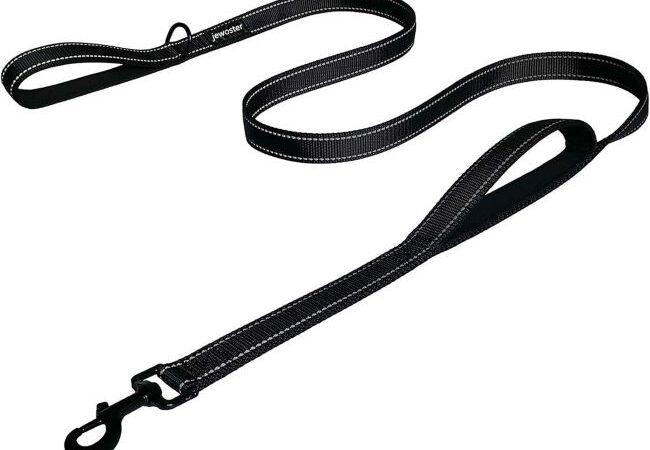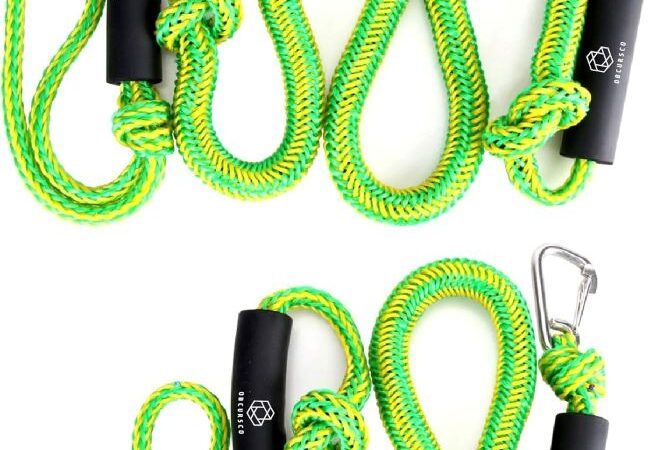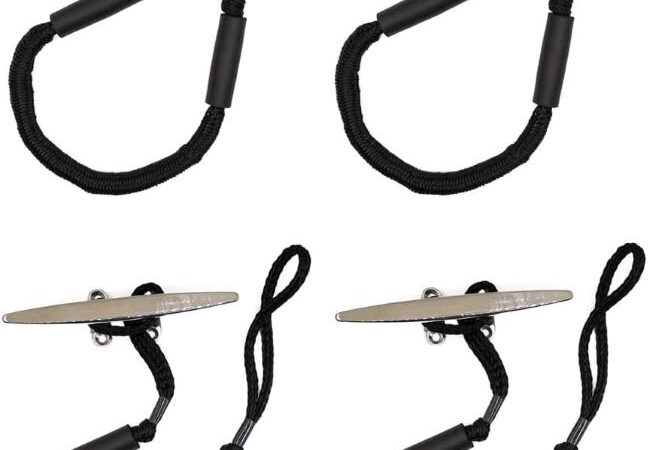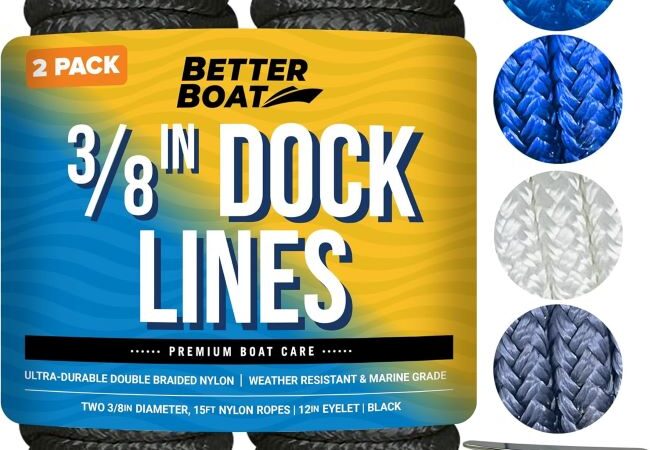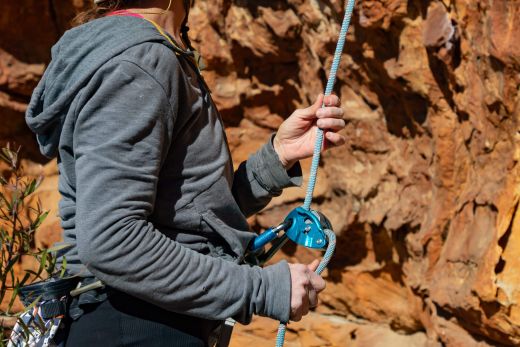
What to Do If Your Climbing Rope Gets Wet: Quick Safety Tips
If your climbing rope gets wet, dry it out of direct sunlight and away from heat sources. Spread the rope out in a well-ventilated area to air dry.
Contents at a Glance
ToggleClimbing is an exhilarating sport that relies heavily on the quality and condition of your equipment. A wet climbing rope can become a safety hazard, as moisture can affect the rope’s strength and handling. Whether from a sudden downpour or a misty environment, ropes are bound to get wet.
It’s essential to know the proper drying techniques to maintain the integrity of your climbing rope. Ensuring your rope is thoroughly dried before storage or further use is crucial in prolonging its lifespan and performance. This brief guide will help climbers understand the steps necessary for effectively dealing with a wet climbing rope, keeping your climbs safe and your gear in top condition.
The Risks Of A Wet Climbing Rope
Climbing ropes are the lifelines for climbers. They must stay in top shape. Moisture, however, can change everything. Understanding the risks of a wet climbing rope is crucial for safety. Let’s delve into the challenges and what they mean for climbers.
Impact On Rope Integrity
Water affects a rope’s strength and durability. A wet rope can become heavier and less reliable. Here are the key issues:
- Reduced strength: Wet ropes can lose up to 20% of their tensile strength.
- Increased weight: Water absorption makes ropes heavier, harder to handle.
- Material wear: Drying can cause materials to break down faster over time.
Always check your rope’s material and treatment. Some ropes have dry treatments to resist water.
Potential For Slippage
Slippery ropes are a serious concern. Wet conditions lead to less friction. Here’s what happens:
- Decreased grip: Wet ropes are slippery, making it tough to maintain a secure hold.
- Compromised knots: Knots may not hold as well, increasing the chance of untying.
- Device performance: Belay and rappel devices may not work as effectively.
To minimize risks, climbers should practice extra caution. Always test your gear in wet conditions.
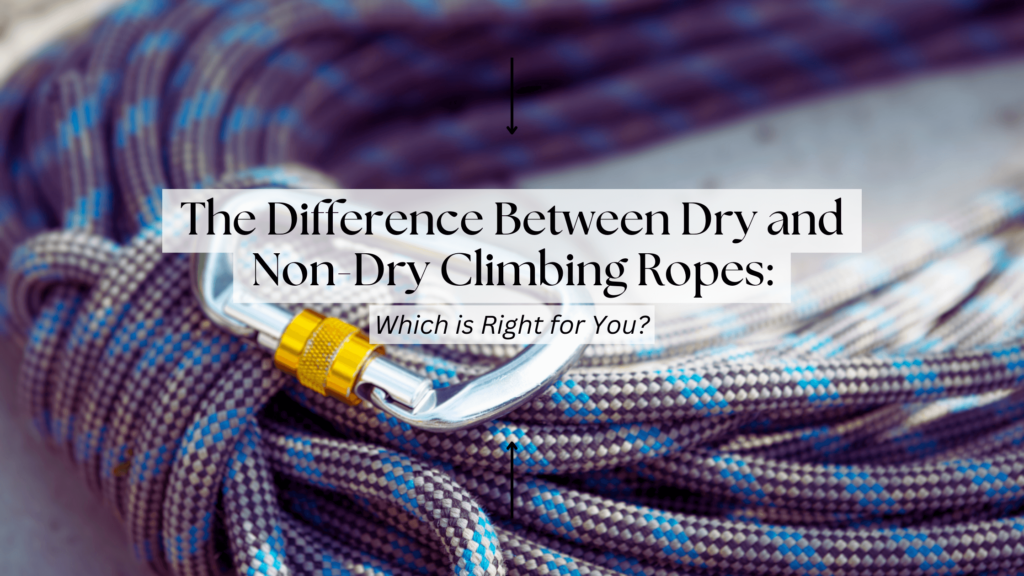
Credit: inspirerock.com
Immediate Steps When Your Rope Gets Wet
When your climbing rope gets wet, immediate action is crucial. Water can affect the rope’s strength and performance. Knowing the right steps to take can help maintain your rope’s integrity. Here are some immediate measures you should follow if you find your climbing rope soaked.
Assessing The Situation
Determine the type of water your rope encountered. Clean water from rain is less concerning than muddy or salty water. Check for visible damage and feel for inconsistencies in the rope’s texture.
Minimizing Further Exposure
Keep the rope away from direct sunlight and heat sources as they can weaken the fibers. Avoid stepping on the wet rope to reduce dirt grinding into the fibers. Hang the rope in a cool, shaded area to dry naturally.
- Do not use heat to dry the rope
- Do not leave the rope coiled tightly
- Avoid harsh chemicals for cleaning
Drying Your Climbing Rope Properly
After a wet climbing adventure, it’s crucial to dry your rope to maintain its integrity and safety. A rope that isn’t dried correctly can suffer from weakened fibers and a shortened lifespan. Here’s how to do it right.
Techniques For Quick Drying
Lay your rope out flat in a well-ventilated area away from direct sunlight. This allows it to dry evenly.
Hang the rope over a clothesline or a large drying rack. Ensure it’s loosely coiled to promote air circulation.
Use a fan to increase airflow. Do not use hot air as this can damage the rope.
Turn the rope periodically to ensure all sides dry equally.
Keep the rope untangled to avoid kinks and bends that can weaken its structure.
What To Avoid During Drying
Never dry your rope in a tumble dryer. The heat can compromise the rope’s strength.
Avoid direct sunlight which can degrade the rope’s material.
Do not use a heat source like a radiator or heater for drying.
Keep away from chemicals and fumes that can break down rope fibers.
Never store your rope wet. Always ensure it is completely dry before packing away.
Testing Rope Safety Post-exposure
After your climbing rope gets wet, it’s crucial to ensure it’s still safe. Water can affect the rope’s strength and durability. Follow these steps to test your rope’s safety.
Conducting A Thorough Inspection
Start by checking the entire length of the rope. Look for any signs of wear, such as fraying or discoloration. Pay special attention to areas that seem stiff or have knots.
- Spread the rope on a flat surface.
- Examine each section closely.
- Feel the rope with your hands to detect unusual bumps or hard spots.
Sniff the rope for any mildew or musty odors, which indicate mold growth. Mold can weaken the rope fibers.
When To Perform A Strength Test
Perform a strength test if your inspection reveals any potential issues. Also, test the rope if it was submerged in water, especially saltwater, which can corrode the fibers.
- Consult your rope’s manufacturer for testing guidelines.
- Use a professional service if available.
- Consider using a test kit designed for climbing ropes.
Remember, safety always comes first. If you doubt the rope’s integrity, replace it. A new rope ensures your safety on your next climb.
| Condition | Action |
|---|---|
| Visible Damage | Do not use. Replace the rope. |
| Mildew Smell | Test for strength before use. |
| Stiffness | Consult a professional. |
By following these steps, you ensure your climbing rope remains a reliable part of your gear. Always prioritize your safety by being thorough in your inspections and tests.
Preventive Measures For Climbing
Preventive Measures for Climbing are crucial for any outdoor adventure. Wet ropes can be dangerous. They can slip or weaken. You need to stay safe. You need to keep your rope dry. Here’s how to protect your climbing rope from water. Follow these steps before you climb.
Choosing Weather-resistant Ropes
Not all ropes handle water well. Choose weather-resistant ropes. These are often labeled as ‘dry’. They have a special coating. This helps repel water. Dry ropes stay strong, even when wet. They dry fast too. Always check the label before buying.
Protective Gear And Storage Tips
Protect your rope from water. Use a rope bag or tarp. This keeps it off the ground. Ground can be wet. Always store your rope in a dry place. Avoid leaving it in your car. Cars can get damp. Use silica gel packets. They absorb moisture. Keep your gear dry and safe.
- Use a rope bag: It shields your rope from dirt and water.
- Store in a dry area: Prevents rope from getting damp and moldy.
- Silica gel packets: These are little moisture eaters. They help a lot.
- Cover during breaks: Use a tarp. It stops rain from soaking your rope.
Understanding Rope Materials And Water Resistance
When you’re climbing, your rope is your lifeline. But what happens when it gets wet? Water can affect your rope’s weight, handling, and safety. Let’s dive into the materials used in rope construction and how they respond to water.
Characteristics Of Different Rope Fibers
Ropes come in various materials, each with unique properties. Understanding these will help you manage a wet rope situation better.
- Nylon: Common in dynamic ropes, nylon is durable but absorbs water, making the rope heavier and less flexible.
- Polyester: Often found in static ropes, polyester is more water-resistant than nylon, maintaining its weight and strength when wet.
| Fiber Type | Water Absorption | Impact on Performance |
|---|---|---|
| Nylon | High | Increases weight, reduces flexibility |
| Polyester | Low | Minimal change in weight and strength |
Hydrophobic Treatments And Coatings
Some ropes feature hydrophobic treatments to enhance water resistance. These treatments repel water, keeping the ropes drier and lighter during wet conditions.
- Dry Treatments: Applied to the rope fibers, these treatments help ropes resist water absorption.
- UIAA Water Repellent Certification: Ropes with this certification have passed stringent tests, ensuring high levels of water resistance.
Remember, a rope that resists water will maintain its performance better, providing safety and peace of mind during your climb.
Retiring A Climbing Rope
Climbing ropes are crucial for safety in climbing. They wear out over time. It’s important to know when to retire a rope to keep climbers safe.
Signs Of Compromised Safety
Several signs indicate that a climbing rope is no longer safe:
- Visible frays or cuts in the sheath.
- Unusual stiffness or soft spots.
- Discoloration or fading from sunlight or chemicals.
- Excessive fuzziness on the rope surface.
- Previous heavy falls may have weakened the rope.
If you notice any of these, stop using the rope immediately.
Recycling And Repurposing Old Ropes
Old climbing ropes can have a second life. Here are some ways to repurpose them:
- Make rugs or mats for your home.
- Create unique jewelry, like bracelets.
- Use them in garden ties or furniture.
- Donate to art projects or local schools.
Recycling centers may accept them as well. Check local options.
| Method | Description | Benefit |
|---|---|---|
| Repurposing | Use in crafts or home projects. | Reduces waste, creative use. |
| Recycling | Processed into new materials. | Supports sustainability efforts. |
Remember, never use compromised ropes for climbing. Safety comes first!

Credit: www.youtube.com
Emergency Techniques In Wet Conditions
Emergency Techniques in Wet Conditions can be a game-changer for climbers facing unexpected weather. Wet ropes pose a unique set of challenges, demanding swift and smart responses. Understanding the nuances of handling a climbing rope under these conditions is crucial. It could be the difference between a successful climb and an unsafe situation.
Knots And Grips For Wet Ropes
Wet ropes can compromise your grip and the efficiency of knots. Choosing the right knots and grips is essential. Here are some tips:
- Use knots that tighten under tension, like the figure-eight follow-through.
- Opt for hitches that can be easily adjusted even when wet, such as the Munter hitch.
- Ensure a firm grip by wearing gloves designed for wet conditions.
Practicing these knots in dry conditions will prepare you for wet scenarios.
Alternative Climbing Strategies
When your rope is wet, alter your climbing approach to stay safe. Consider these strategies:
- Reduce weight on the rope by climbing more cautiously.
- Move in shorter pitches if possible, to minimize the length of rope you expose to water.
- Use rope protectors to shield the rope from direct water contact.
Being flexible with your climbing strategy can significantly increase safety.
Expert Advice On Climbing In The Rain
Heading out on a climb and facing rain can be tricky. Your climbing rope is vital and keeping it safe is essential. Wet ropes can affect your climb’s safety and performance. Experts share their wisdom on climbing in the rain. Learn the dos and don’ts to keep climbing fun and secure, even when the skies open up.
Tips From Professional Climbers
Professional climbers have a wealth of knowledge to share about handling a wet climbing rope. These tips come from their experience:
- Check the forecast before you leave.
- Waterproof your gear, especially the rope.
- Choose routes wisely; some are better in wet conditions.
- Keep the rope clean to prevent grit from causing damage.
- Use a rope bag to protect it from ground moisture.
- Let it dry naturally post-climb, away from direct sunlight.
How To Plan For Unexpected Weather
Sudden weather changes are common. Being prepared can make all the difference. Here’s how to plan:
- Pack a weather-resistant tarp for quick shelter.
- Include dry bags in your gear to keep essentials dry.
- Bring extra layers for warmth and protection.
- Carry a compact, quick-drying towel for wiping down.
- Invest in a weather app for real-time updates.
Remember, safety always comes first. If conditions worsen, consider postponing your climb. Always trust your instincts and the signs from nature.
Maintaining Your Climbing Rope Over Time
Your climbing rope is your lifeline on the rocks. Proper maintenance ensures safety and longevity. Whether it’s after a wet climb or years of use, caring for your rope is key. Follow these steps to keep your rope in top condition.
Regular Cleaning Guidelines
Regular cleaning keeps your rope free from dirt and grime that can wear it down. Here’s how to do it:
- Shake out the rope to remove loose dirt.
- Use mild soap and lukewarm water.
- Soak the rope, then gently wash it by hand.
- Rinse thoroughly to remove all soap.
- Air dry away from direct sunlight.
Long-term Storage Solutions
Proper storage is crucial for extending your rope’s life. Follow these tips:
- Store in a cool, dry place.
- Avoid areas where chemicals are present.
- Keep away from sharp objects that can cause nicks.
- Coil the rope loosely to avoid kinks.
- Use a rope bag or tarp for extra protection.
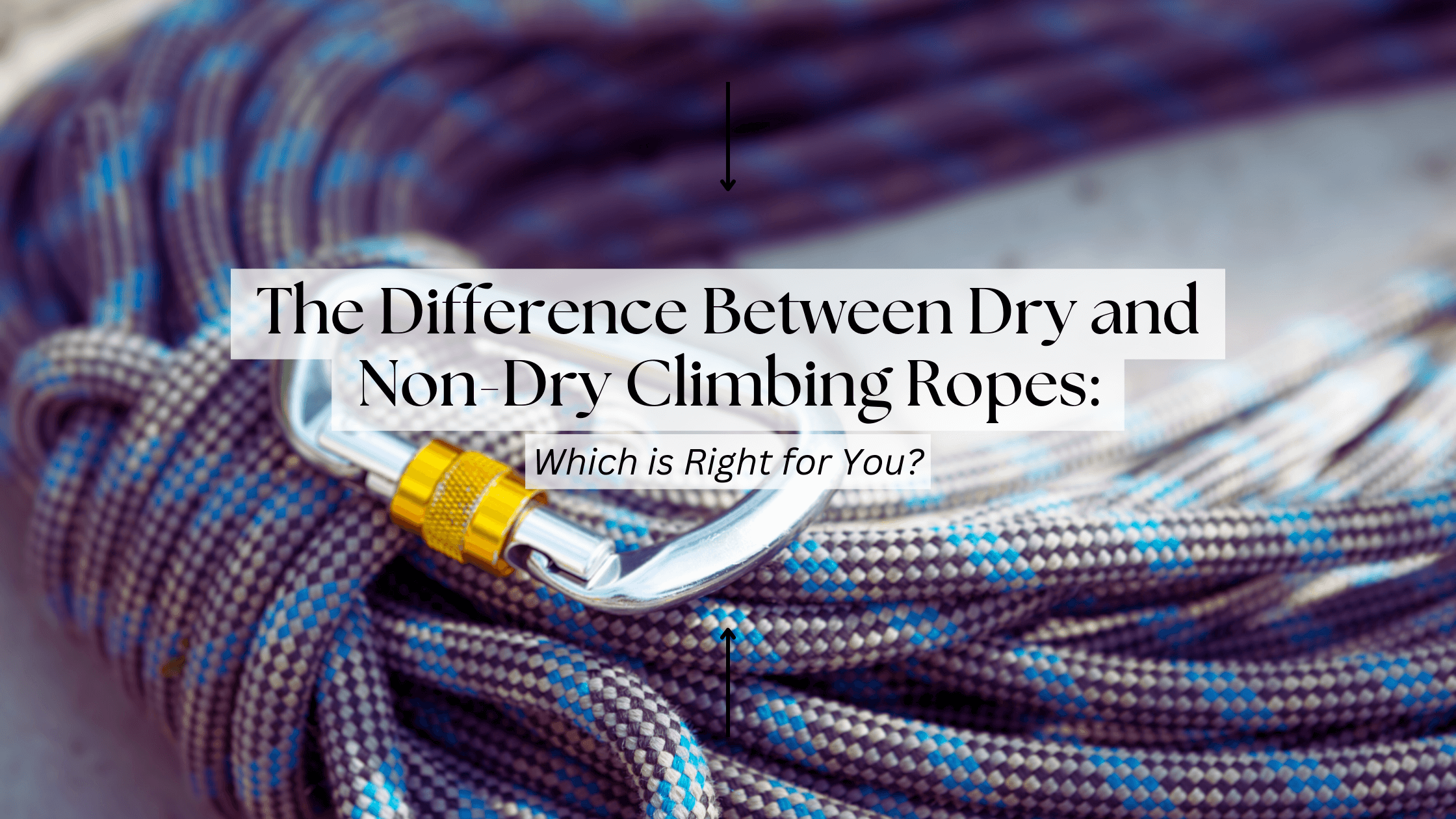
Credit: inspirerock.com
Frequently Asked Questions
Is It Bad If Climbing Rope Gets Wet?
Getting a climbing rope wet can impact its strength and safety. Always dry it thoroughly before storage to maintain its integrity.
What To Do When Rope Gets Wet?
Dry the rope thoroughly by hanging it in a well-ventilated area. Avoid direct sunlight and heat sources to prevent weakening the fibers. Rotate the rope occasionally to ensure even drying.
How To Dry A Wet Climbing Rope?
To dry a wet climbing rope, first rinse it with fresh water. Gently shake off excess moisture, then hang it in a cool, shaded place. Avoid direct sunlight and heat sources, as these can damage the rope. Allow it to air dry completely before storing.
Can Water Damage Rope?
Yes, water can damage rope, especially if it’s made from natural fibers. Prolonged exposure to moisture can cause ropes to weaken, rot, or develop mold. Synthetic ropes are more resistant but still need drying after use to prevent damage.
Conclusion
Dealing with a wet climbing rope is manageable if you follow the right steps. Always ensure it’s thoroughly dried before storage to maintain its integrity. Remember, regular checks for wear and tear are crucial for safety. Keeping your rope in top condition ensures many more successful climbs.
{ “@context”: “https://schema.org”, “@type”: “FAQPage”, “mainEntity”: [ { “@type”: “Question”, “name”: “Is it bad if climbing rope gets wet?”, “acceptedAnswer”: { “@type”: “Answer”, “text”: “Getting a climbing rope wet can impact its strength and safety. Always dry it thoroughly before storage to maintain its integrity.” } } , { “@type”: “Question”, “name”: “What to do when rope gets wet?”, “acceptedAnswer”: { “@type”: “Answer”, “text”: “Dry the rope thoroughly by hanging it in a well-ventilated area. Avoid direct sunlight and heat sources to prevent weakening the fibers. Rotate the rope occasionally to ensure even drying.” } } , { “@type”: “Question”, “name”: “How to dry a wet climbing rope?”, “acceptedAnswer”: { “@type”: “Answer”, “text”: “To dry a wet climbing rope, first rinse it with fresh water. Gently shake off excess moisture, then hang it in a cool, shaded place. Avoid direct sunlight and heat sources, as these can damage the rope. Allow it to air dry completely before storing.” } } , { “@type”: “Question”, “name”: “Can water damage rope?”, “acceptedAnswer”: { “@type”: “Answer”, “text”: “Yes, water can damage rope, especially if it’s made from natural fibers. Prolonged exposure to moisture can cause ropes to weaken, rot, or develop mold. Synthetic ropes are more resistant but still need drying after use to prevent damage.” } } ] }

